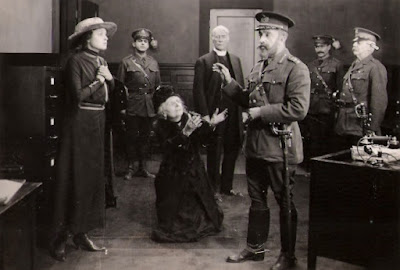 |
| Still from Whom the Gods Destroy via “Unsung Divas of the Silent Screen” |
While St. Patrick’s Day is now a generally beloved holiday (we’re going to grab Shamrock Shakes in a moment), it’s easy to forget that much of the world was inhospitable to the Irish a century ago. The hostile attitudes toward the Irish continued through the early 20th century in the lead-up to the uprising in Ireland in 1916. In an interesting bit of timing, that coincides with the early days of film.
We found this lengthy but extremely in-depth article by Kevin Rockett from Trinity College Dublin about the representation of the Irish in pre-1916 films. To summarize, Ireland didn’t have much of a film industry until World War I, so a majority of Irish representation on-screen was left to American producers. Only a few of these films depicted the Irish was menacing stereotypes; most of these films depicted Irish history just because of the interesting content. But more controversially, they scrubbed these stories of their more radical, political elements, possibly as an appeal for cultural assimilation and an attempt to quell the rising anger.
European audiences imported and generally enjoyed these films, but it wasn’t until the rise of Ireland’s nationalist cinema a few years later that the Irish found their cause represented on-screen. Rockett notes that those nationalist films depicting Irish rebellion sparked such a strong, violent reaction that the film was banned in multiple countries.
Even as critics and producers at the time tried to downplay film as only an entertainment medium and not a political one, the depictions in and outside of Ireland – discouraging versus embracing Irish identity – had a message associated with them. You can read that same thread into modern depictions of race on film too: you can’t depict history without at least an implicit message.
This might be a little academic-y for St. Patrick’s Day, but we were greatly interested in Rockett’s take on this unexamined slice of film.
